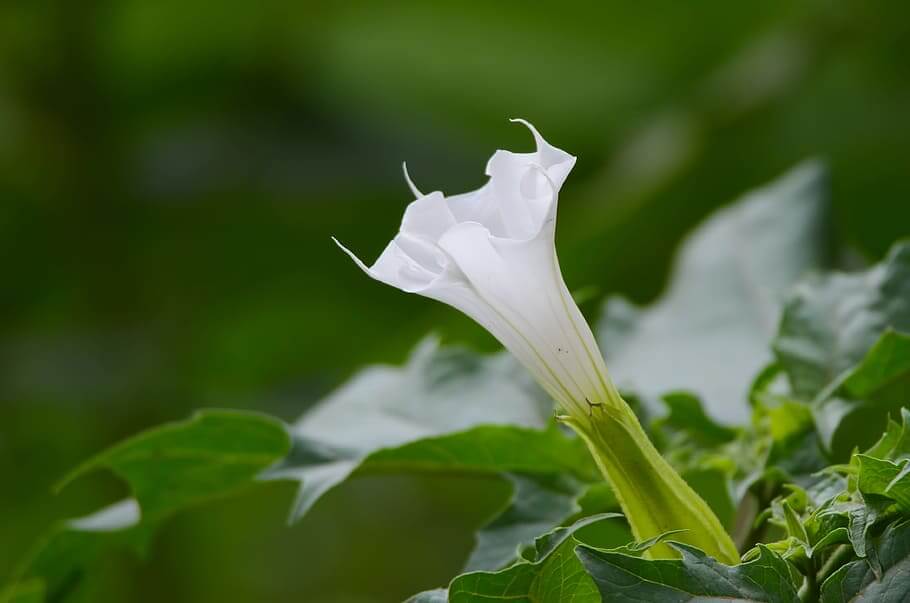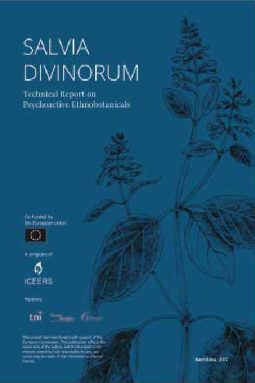Basic Info
Datura stramonium is a wild plant of the Solanaceae family. It is found in both hemispheres, in areas of temperate, subtropical and tropical climates. It is a plant native to Asia, but it also grows in North America and Europe.
D. stramonium, like many Solanaceae, contains tropane alkaloids that are toxic and dangerous, such as atropine, hyoscyamine and scopolamine. Plants that are similar to D. stramonium are Datura metel and Datura inoxia.
Solanaceae have been used traditionally in different cultures for medical and healing purposes, as well as for rituals of initiation, divination and magical-religious rites. These plants include the different species of daturas such as henbane (Hyoscyamus niger), mandrake, and the different varieties of brugmansias (the species of datura native to South America).
Origin/History
D. stramonium is a plant native to the deserts of southeastern North America and Central and South America, Europe, Asia, and Africa. It is found mainly in the areas near the Himalayas, from Kashmir to Sikkim, at altitudes of up to 2,700 meters. It reproduces by means of seeds and grows in woody logs reaching a height of up to 2 meters.
Different cultures have used the varieties of datura for their medicinal and intoxicating properties.
In Tibet the entire plant is used. The seeds have been used to treat joint pain, asthma and excessive coughing, gastric convulsions and strokes. The flowers have been used as an anesthetic.
In India the use of different varieties of datura, particularly D. metel, has been established. It has been used as a visionary and intoxicating plant, associated with the cult of the god Shiva, and its risks were well-known. In other parts of Asia the plant has been used as an addition to alcoholic beverages to increase their intoxicating properties. In other places the seeds of the datura have been mixed with cannabis for their inhaled use. D. stramonium is part of the Ayurvedic pharmacopoeia.
The intoxicating and medicinal properties of datura are also known in Africa. It has been used as an addition to Pombe, a local alcoholic beverage from Tanzania, to increase its intoxicating capacity. Leaves are smoked to relieve asthma attacks and lung problems.
There are indications that Datura stramonium was already being used in Europe in the Neolithic era. Residues of fermented beverages containing hyoscyamine have been found in pots dated to 3000 BCE, used in funeral contexts. In medieval Europe it is known that plants related to daturas were used, such as mandrake and henbane, which contain the same alkaloids. These plants were used for their medicinal properties, and also to induce visions. The visions and experiences induced by these plants as well as the methods of administration in ointments have been correlated to the experiences of medieval witches “flying” on brooms. These practices were condemned by the Catholic Inquisition, and the traditional use of these plants virtually disappeared.
In the New World, different varieties of daturas, called toloache (D. inoxia), have been used in Mexico, both for magical-religious and medicinal uses, especially the application of ointments to reduce rheumatic pain and as an anti-inflammatory, as well as in initiation rites.
In Colombia, Ecuador and Peru, different ethnic groups have used brugmansia species, plants of the datura genus that contain the same alkaloids for their divinatory qualities and for initiatory rites of the young.
Chemical composition and dosage
The chemical composition of the different varieties of datura has been researched since 1930. The main tropane alkaloids containing D. stramonium are atropine, scopolamine and hyoscyamine. Daturas also contain small amounts of other alkaloids such as noratropine, apotropine, meteloidine, norscopolamine and aposcopolamine.
The dosage of datura and other Solanaceae is extremely difficult to determine. Different parts of the plant contain different amounts of alkaloids and their concentration may vary depending on the time of year, variety and habitat. In general, the seeds are the part of the plant that contains the highest concentration of alkaloids.
The doses of atropine and scopolamine used in medicine are on the order of milligrams or tenths of a milligram, so accuracy in dosing is essential. With plants a precise dosage is impossible to determine and it is easy to overdose, including all the dangers that this can entail. Therefore, the recommendation is not to use these plants at all.
Effects
The toxic effects of datura have been observed and studied since accidental poisoning with the plant is relatively frequent in places like India, and there have also been cases of poisoning and death in the United States and Europe.
The alkaloids related to poisoning appear to be scopolamine and its derivatives.
The effects of datura intoxication include delusions, agitation and convulsions, mydriasis (dilated pupils), blurred vision, photophobia or hypersensitivity to light, dry mouth and other mucous membranes, extreme thirst, tachycardia, nausea and vomiting, difficulty swallowing and speaking, hypertension, increased body temperature, loss of consciousness and in some cases coma.
During an experience with datura, hallucinations and real delusions usually occur, meaning there is no awareness that what is being experienced is due to the substance, and it is perceived as objective reality. Therefore, there is a risk of engaging in inappropriate behavior, erratic interaction with the environment, and causing or suffering accidents.
The onset of effects begins between 20 minutes and 4 hours after ingestion, depending on the route of administration, the dose ingested and the part of the plant used, as well as the method of preparation. Effects can last for several hours, and reports of people who have been intoxicated for 24-48 hours or even more are common.
After a datura experience people usually have amnesia regarding what happened.
Many of the deaths attributed to daturas were not caused by the direct effects of the plant, but by dehydration as people are in a delirious state for hours in extremely hot climates.
Legal status
Neither Datura stramonium nor other varieties of daturas, brugmansias, henbane or plants containing tropane alkaloids such as atropine or scopolamine are controlled in most countries.
Health and risk reduction
Although the use of datura and other Solanaceae has been conducted for medical, religious and ritual purposes in various cultures, and it is still in use today, the risks of poisoning by atropine, scopolamine and hyoscyamine are very high, and may involve accidents, irreversible physical and psychological problems and even death.
In the cultures that use these substances, their danger is recognized as is the absolute necessity that those who handle these plants have profound knowledge about them. Only highly experienced shamans utilize datura.
Very small amounts of leaves, flowers or seeds can have dramatic effects that cause psychological problems (delusions, terrifying experiences, psychotic states of uncertain duration…) as well as physical ones (cardiovascular problems, cardiac arrest, convulsions, anaphylactic shock, falls, drownings…). Cases of death have been documented following the use of Datura stramonium and other varieties of datura.
The experiences induced by datura are usually unpleasant as well as dangerous.
The use of this type of plant is totally advised against for these reasons.
Note: Burundanga
Burundanga is a datura preparation that has become popular as a chemical submission drug to perpetrate crimes such as robbery or sexual assaults. In fact it is considered a “date-rape drug.” However, a prospective study in Barcelona did not find any of the drugs classically considered “date-rape drugs” (such as flunitrazepam, GHB, ketamine or scopolamine) in the analyses, alcohol being the main drug (which was mentioned by each and every one of the people in the group with suspected chemical submission drugging), followed by other psychoactive substances, mostly stimulant drugs.
Categories:
PSYCHEPLANTS
, Datura stramonium
Tags:
psycheplants
, information
, Datura stramonium


